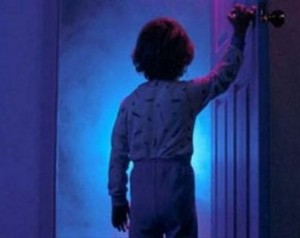Sleepwalking is a type of sleep disorder that is characterized by walking or other activities like urinating on the floor, etc. and may be accompanied by other sleep disorders like night terrors. Children who experience sleepwalking usually do not have any recollection of the incidents that transpired at the time of sleepwalking.
Sleepwalking usually happens during the first two or three hours of deep sleep. Sleepwalking in children usually goes away on its own as they grow up. It is important to take care of the children who are prone to sleepwalking as it may result in grievous injuries.

Symptoms of sleepwalking in children
Some of the symptoms of sleepwalking in children are as follows:
• When children experience incidents of sleepwalking, then they may exhibit signs like walking silently, running restlessly or there may be efforts to run away. The child’s behaviour may elicit confusion and clumsiness whilst sleepwalking
• The child may roam or walk around the house with eyes that are wide open, staring at nothingness and with a kind of dead look to them. In addition, the child may also have a dazed or blank look that reflects in their facial features.
• Older children usually awaken during or at the end of sleepwalking incidents and are often mortified at their predicament. On the other hand, some children may perform compulsive acts or be prone to bedwetting instead of sleepwalking.
• When parents confront their children at the time of sleepwalking, they may respond in a nonsensical and incomprehensible manner and the response is usually sluggish and riddled with simple thoughts. When children who sleepwalk are taken back to bed by the parents without being woken up, they generally do not recall the incident or the episode.
• It may be difficult to awaken the children when they are sleepwalking. There may also be increased restlessness in children who sleepwalk and those who are increasingly awakened.
Causes of sleepwalking in children
Some of the causes and risk factors of sleepwalking in children are listed below:
• Children who have a family history of sleepwalking are at more risk to develop the sleepwalking disorder.
• Increased tiredness or fatigue
• Anxiety or stress
• Sleep schedules or routines that are chaotic
• Deprivation of sleep
• Fever
• Medications and prescription drugs such as antihistamines that are used to treat allergies
• The slow wave sleep in children has a greater depth and length, which increases their vulnerability to sleepwalk
• Deficiency in magnesium
• Existing medical conditions like migraines, sleep apnea, nocturnal asthma, nocturnal seizures or convulsions, head injuries, frequent episodes of food regurgitation, restless legs syndrome and abnormal heartbeats.
• Existing psychiatric disorders like anxiety attacks, multiple identity disorders, post traumatic stress disorder, etc.
Treatment of sleepwalking in children
• Sleepwalking in children has no treatment. However, if sleepwalking results in sleep deprivation and subsequent loss of grades in school, then the child may have to undergo therapy and counselling to check and cure signs of stress, anxiety and other psychological disorders.
• If sleepwalking in children results from pre-existing medical conditions then those conditions have to undergo the relevant treatment.
• If sleepwalking incidents result in personal injury to children, then the house should be made safe like a fortress o prevent injury.
• Medications such as tricyclic antidepressants and benzodiazepines may also be prescribed by a physician to alleviate the symptoms
A full bladder is often the reason for children to urinate in their sleep or during sleepwalking. So ensure that the child goes to the loo before bed-time or do not give fluids to the child before bed-time.
• Parents can keep a schedule of the timings of sleepwalking in their child and accordingly wake the child up some time before the episode, thereby preventing it. Such measures will assist in the development of new sleeping patterns thereby eliminating sleepwalking in their child.